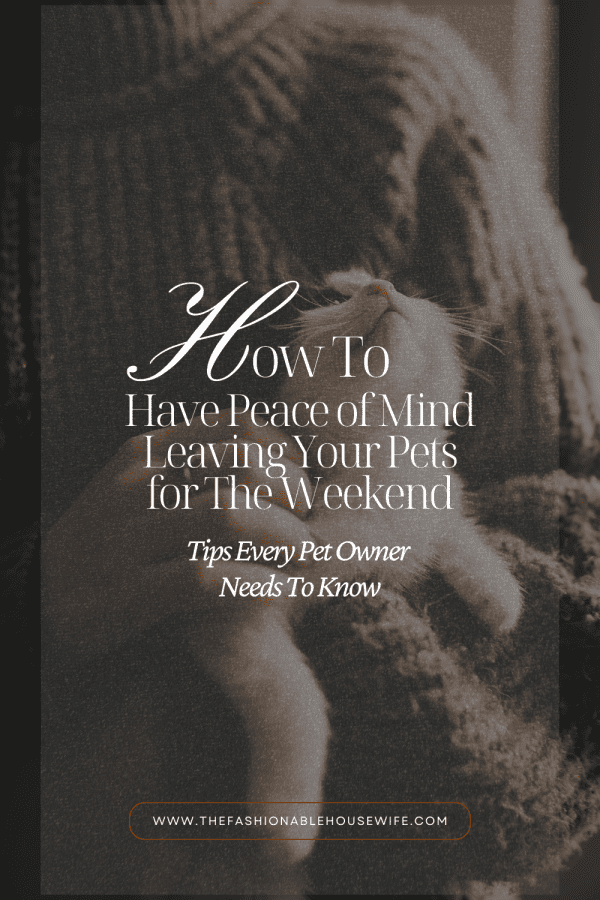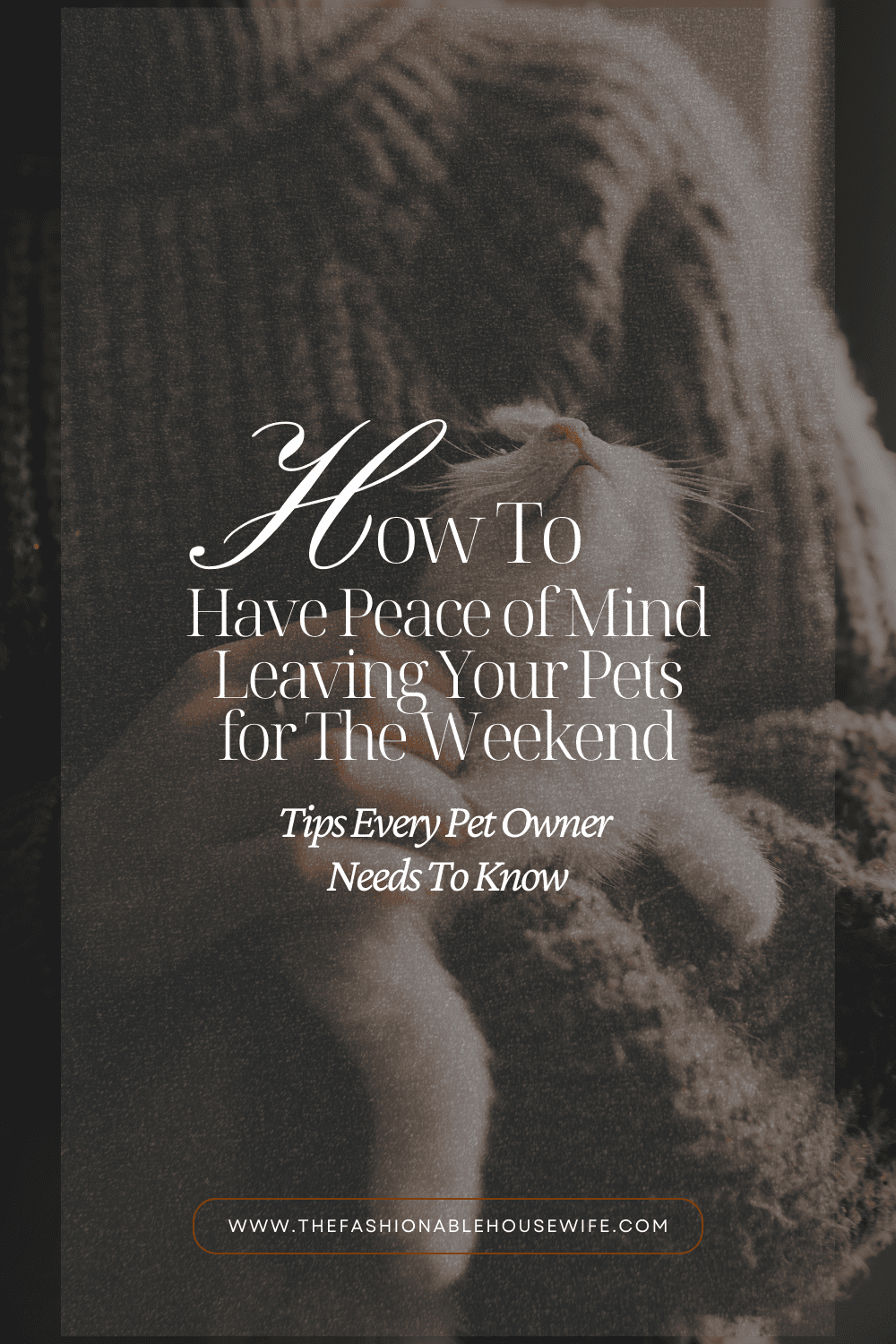How to Have Peace of Mind Leaving Your Pets for The Weekend

When a short break is being planned, the idea of pets remaining at home could raise questions that feel distracting, even if the situation seems mostly under control and the basic steps are known. It is possible to prepare in simple ways that keep the process easy to follow, while still allowing for changes that might appear. Different homes will prefer different options, and the main aim stays steady, which is to keep things predictable and safe when leaving your pets.
Plan who helps when leaving your pets
Choosing who will assist during the absence usually works best when it is decided early, because schedules can be matched and expectations can be written in clear terms that another person can understand and follow without guessing. You could confirm dates, entry instructions, feeding notes, and any medication steps, while also adding emergency contacts that may be needed if something unusual happens. A short meeting before departure lets the helper see the pet’s normal behavior, and this can make later visits smoother because small cues are recognized in advance. Written timing for visits reduces confusion, and a simple checklist may keep tasks organized. When these pieces are arranged calmly and the plan is shared, the weekend care often runs as expected, and the pet experiences fewer surprises.
Protect daily rhythm and simple habits
Maintaining a familiar schedule when leaving your pets often reduces stress because predictable events guide how the day unfolds, and pets respond to that kind of stability even when you are not present. You might ask the helper to keep feeding times close to normal, to check water levels at similar points in the day, and to provide walks or litter care in the usual order so energy levels stay balanced. Familiar routes for outdoor time can be kept when safe, since repeated sights and smells may support a relaxed state. Play and treats can continue within the routine, but timing should be steady and not random, which helps reduce overexcitement or restlessness. Clear notes on bedtime and morning patterns give structure. With these small consistencies, the home atmosphere remains simple, and many pets settle more easily.

Put essentials and notes in one place
Organizing supplies and instructions in a single visible area helps the person who is assisting because there is less time lost searching for simple items and fewer chances of mistakes with measurements or doses. Food containers can be labeled with clear scoops, medication can be paired with brief directions, and the normal toys or enrichment pieces can sit together in one bin. House rules could be written in short lines that explain doors, windows, and gates, especially if certain areas should stay closed. A spare key might be stored in a safe spot, and a backup contact may be listed for unexpected needs. Cleaning steps for accidents can be included to make responses quick and consistent. When the environment is prepared this way, routine tasks run smoothly, and calm interaction is easier to maintain.
Add trusted visits to cover gaps
Short visits from a reliable helper can fill spaces between primary check-ins, and this often supports exercise, social contact, and simple reassurance without changing the core plan. After the main schedule is built, you could add a midday stop or an evening walk that keeps movement steady and reduces long idle periods that sometimes cause restlessness. For example, a San Francisco dog walker can maintain outdoor breaks and provide structured activity that keeps habits stable and energy managed. References and insurance may be confirmed, and messaging expectations can be set so each visit is verified with quick updates. Entry steps, leash placement, and harness fit should be described in plain terms. By adding these pieces in a measured way, the overall routine remains predictable, and small problems are less likely to escalate.

Make the home calm and familiar
Comfort cues inside the space can shape how a pet handles quiet hours, since familiar smells and sounds might guide relaxation when the environment feels a little different. You could place a recently worn shirt near the resting area so a known scent is present, while a low and steady sound source may reduce reactions to sudden noises. Timers on lamps can suggest an ordinary evening pattern, and curtains or shades could be adjusted so outside movement is not overstimulating. Favorite resting spots should stay accessible, and safe rooms or gates can direct where time is spent if that improves comfort. Water bowls and bedding can remain in their usual locations. With these simple signals arranged carefully, the setting often feels steady, and many pets choose to rest rather than search or pace.
Conclusion
A short absence can be handled with straightforward steps that keep care arrangements predictable, keep anxiety low, routines steady, and the living area organized in practical ways. Clear helpers, labeled supplies, timely visits, and quiet comfort measures usually work together to limit stress and support normal behavior during your time away. While needs differ across households, these uncomplicated actions tend to maintain stability when leaving your pets, and returning home feels routine because the plan held together without unnecessary complications.

